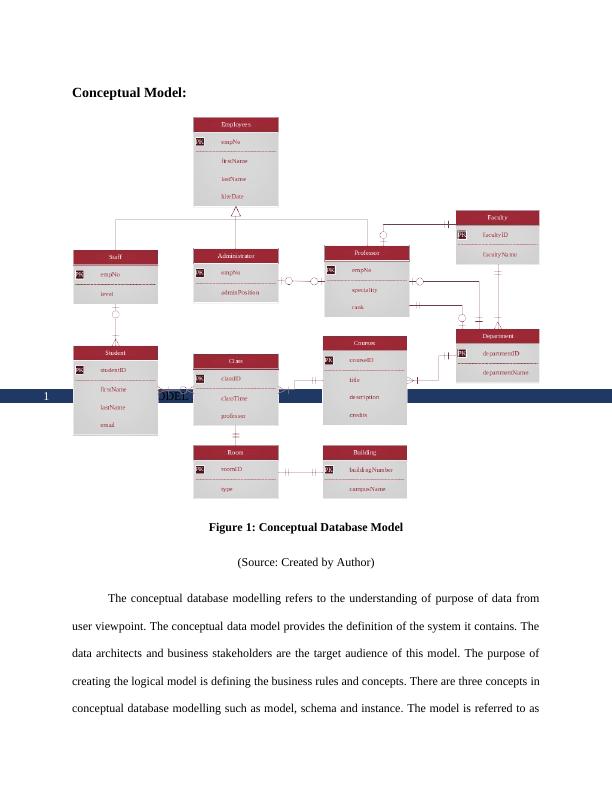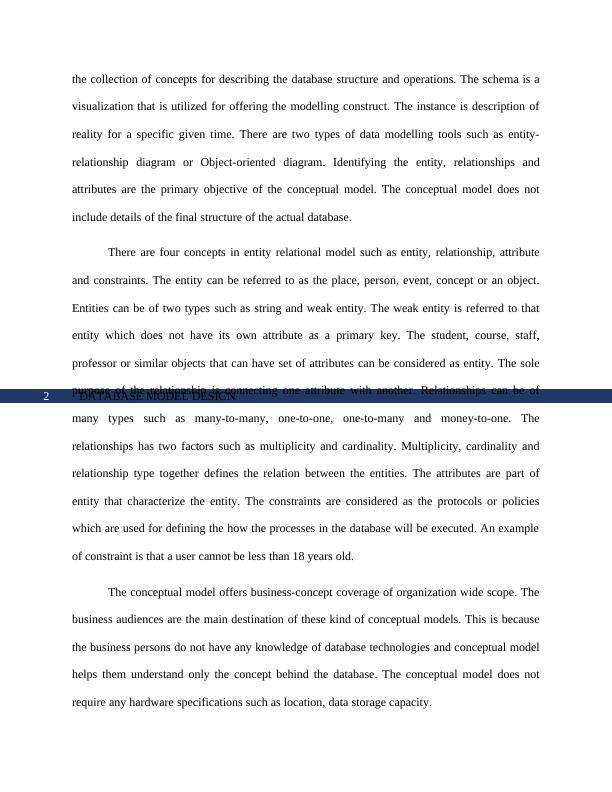Database Model Design
This unit introduces students to managing organizational and project data and information stored in various systems. The assignment requires students to create a database for a college, including information about employees, faculties, departments, and courses.
10 Pages2343 Words341 Views
Added on 2022-10-15
About This Document
This article discusses the conceptual and logical database model design with examples. It explains the purpose of data from a user viewpoint and the types of data modelling tools. It also provides insights into the entity-relationship model and foreign key constraints.
Database Model Design
This unit introduces students to managing organizational and project data and information stored in various systems. The assignment requires students to create a database for a college, including information about employees, faculties, departments, and courses.
Added on 2022-10-15
ShareRelated Documents
End of preview
Want to access all the pages? Upload your documents or become a member.
Logical Database Design Database Design
|21
|2174
|22
Database Design and Implementation: ER-Model, Relational Schema, Constraints, and Business Intelligence
|5
|1023
|448
What is a Database? Definition, Meaning
|7
|835
|20
Collection of Logically Related Data - Desklib
|6
|563
|99
Systems Analysis and Database Design
|6
|1361
|25
Designing Database
|12
|1766
|24



